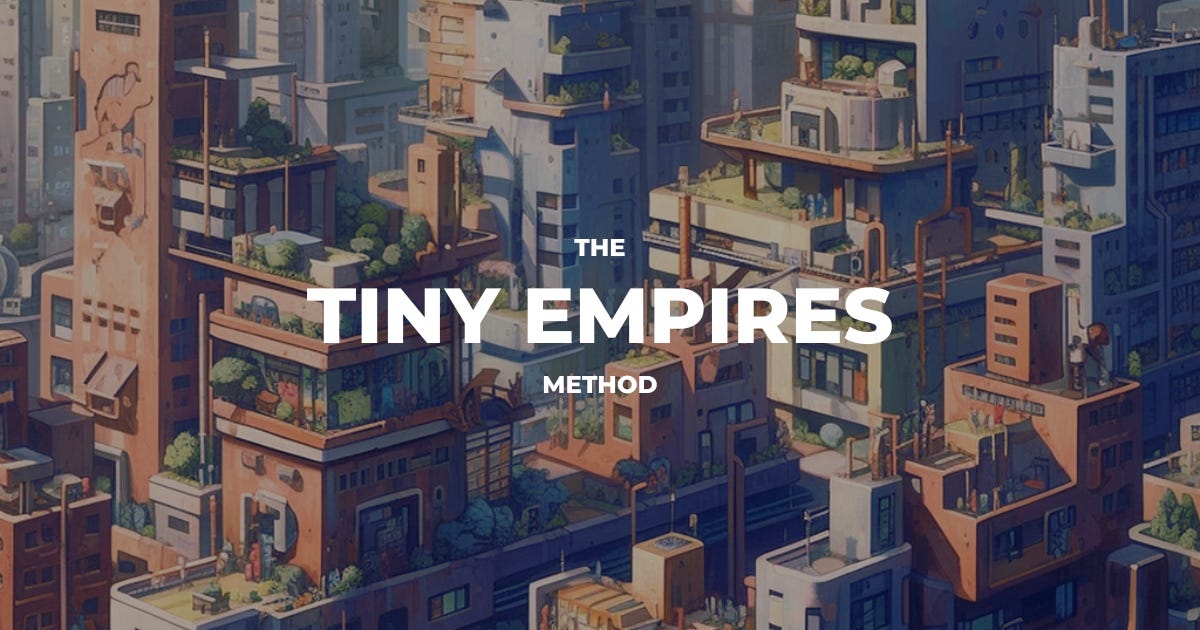Guide #13: How to validate your startup ideas (easily)
There were many reasons for the failures, but if you asked me for the main one
My personal startup journey is a guidebook for entrepreneurship failure. I tried and failed for 10 full years.
1 decade. $0.
There were many reasons for the failures, but if you asked me for the main one, I’d say
“I didn’t validate the ideas properly”
In other words, I didn’t fully test the idea first to see if it was a legitimate business.
Many of my ideas were terrible, others were mediocre. Of course, in my vain naivety, I thought I was on the verge of Steve-Jobs-esque innovation.
The truth is, I lied to myself time and time again.
I convinced myself the businesses were good businesses. They weren’t.
I told myself I was validating the ideas, but I never truly did.
Wishful thinking is a terrible thing. If you can’t be truly honest with yourself, you will defeat yourself with your own desire of what you want to be true.
After a lot of failed attempts however, I finally worked out how to properly validate businesses and never again wasted months building an idea that was never going to work.
In today’s guide, I’ll share my learnings on how to do it the easy way, to save yourself time, money and shorten the path to a startup that actually works.
Failure to do this, will only lead to
Frustration
Working for $0
Jumping between ideas
Feeling like your not cut out for this
Thankfully, validating your idea is actually very easy. You just need to follow the money, not the idea. If you can do that, you can find ideas worth pursuing in a matter of days, not years.
Here's how, step by step:
Step 1: Find potential customers
The purpose of validating your idea is to make sure that people are willing to pay for the product/service you’re offering and to make sure that there is a big enough market.
In other words, money money money.
My mistake when validating my ideas was that I didn’t check if it could make money, I only checked if other people thought it was a good idea.
But ideas don’t pay the bills. Money does.
Let’s not forget that business is all about making money. If your idea doesn’t make money, it’s not a business. This is the no.1 thing we need to validate.
If the product/service that you offer is targeted at businesses (which I HIGHLY recommend if you’re trying to build a Tiny Empire), then the easiest and most useful way to validate your idea is to actually speak to people in the industry.
We need to find potential customers and find out if they will buy our product/service.
There are many ways to do this. A few ways to connect with potential customers are by using Twitter, LinkedIn, Sales Navigator or an email outreach tool with a built-in database like Apollo.io
Step 2: Talk to them
Now that we have a list of potential customers, let’s talk to them. Forgive me for sounding patronizingly simplistic, but let’s not overcomplicate things.
Don’t just email them. You want to actually get on video calls with people in the industry and tell them about your idea.
Why is this important?
It allows you to tell them about your idea and ask them if they would be willing to pay for it
You can potentially sign them up as an early customer
Learn about the wording they use so you can market to them
If the problem doesn’t exist, you can find other problems they face
You can get referrals for other potential customers
How do you get people to jump on a call with you just to ask questions?
There are a couple of approaches that can work:
Offer them early access for free and a discounted ongoing price in exchange for their help.
Offer to pay them for their time of jumping on a call. The main thing is that you want to be respectful of their time. We’re all used to being bombarded with emails from people hard-selling their services, so an offer to pay them for their time and expertise is a refreshing change and likely to get responses. Many people will refuse to be paid but just appreciate being respected.
Step 3: Ask a fixed set of questions
Now we need to ask good investigative questions that will help us determine if our idea is a strong business, or just a good idea. Listen closely. Keep your ears open for everything they say as you may unearth threats or opportunities you hadn’t considered.
Like any good experiment, we want to remove variables. We do this by asking each person we speak with the exact same questions.
Create a spreadsheet for tracking all the responses. Start with these columns:
Company name
Contact person
Email address
Next, add some columns for company information (e.g. revenue, number of employees) and the contact person’s role at the company. This helps you see which types of companies respond best to the idea and who the best people to speak with are.
Then add a column for each of your questions to add the responses of each person. Always ask them what the biggest problem they’re facing at the moment is. You might unearth a different business idea based on what they answer to this question. The best businesses come from the biggest problems. People will part with their money far easier for big problems, so the bigger the problems you can solve, the better.
At the end of the call, tell them about your product and the price and ask them if they would buy it at that price. If not, what price would they pay? Add this to the spreadsheet too.
If they say that they would be willing to pay, you can optionally ask them if they would like to pre-order at a discounted rate. This comprehensively confirms that the idea works. If you don’t do this, at least you have a verbal indication that people will pay which isn’t quite as strong but still a good indicator.
Step 4: Review the answers
Look at your spreadsheet and look for themes that people mention.
What are the biggest problems people face?
Did you uncover any other problems?
Also look for the wording that people use. You can use this to describe how you talk about your product. e.g. do they call their customers “customers”, or do they call them clients, shoppers or consumers? To be part of the industry, you need to speak the lingo.
Has your initial idea been proven?
If not, did you uncover new ideas?
You can repeat this process with more potential clients or continue the conversation with those you already spoke to via email. Keep refining your idea until you have something that people say “yes” to immediately.
Summing up
Instead of wasting months building out your idea, just find a handful of potential customers and talk to them. You can do this in a few days and end up with a very solid understanding on whether the business will work or not. If it seems like the idea won’t work, you’ve saved yourself a lot of time and frustration. Now you can try again with a different idea. In a few short weeks, you could test many different ideas across multiple industries and have a much clearer view of where opportunities lie. Good luck
If you found this useful, I share 15 years of startup learnings in 3-min guides every week. Subscribe here to get every guide for free.
If you’re looking for more help
I offer 2 video courses which go into my full process for building a 1-person 6-figure business that works around your life, not the other way round. You can learn more about both of these below:
Tiny Empires: Build a 6-figure business with no funding and no staff: This is very different to most business courses which are geared towards growth at all costs. The Tiny Empires method focuses on building a sustainable 1-person business by understanding the business models and strategies that work for small businesses and optimizing them using tools and systems. By the end of this course, you should have a clear step-by-step path from idea to revenue, to allow you to build a business which works around your life. Learn more
Sales for Introverts (and people who don't like selling): This is not your average sales course. I don't use any salesmanship or sleazy tactics or endless unsolicited follow ups. Instead I focus on honesty, simplicity, human psychology and productive systems. By the end of this course, sales should no longer be a dreaded task and you will have actionable steps to become a sales master (even if you're shy). Learn more
Hire me: A few times a year, I help founders build their projects using Bubble and other no-code tools. My speciality is lean, market-ready apps. I’ve sold 4 of my own companies that were built this way. I’m currently looking for my next project. If you would like my help, drop me an email







